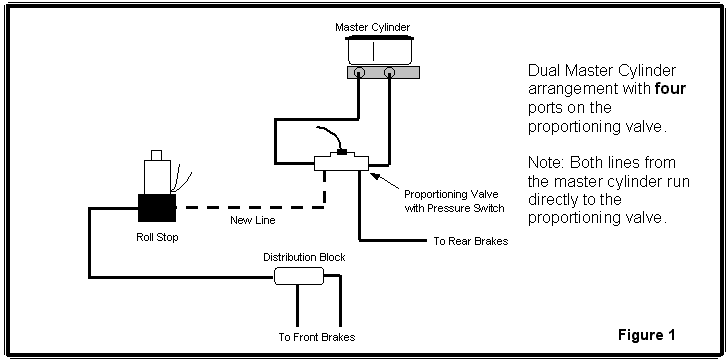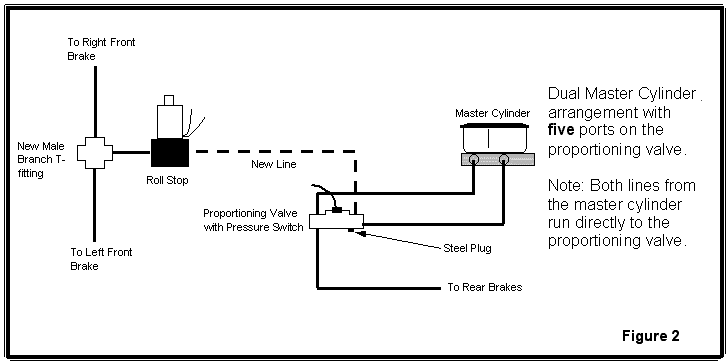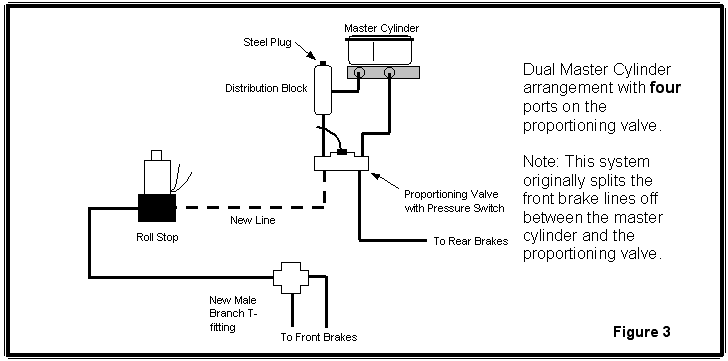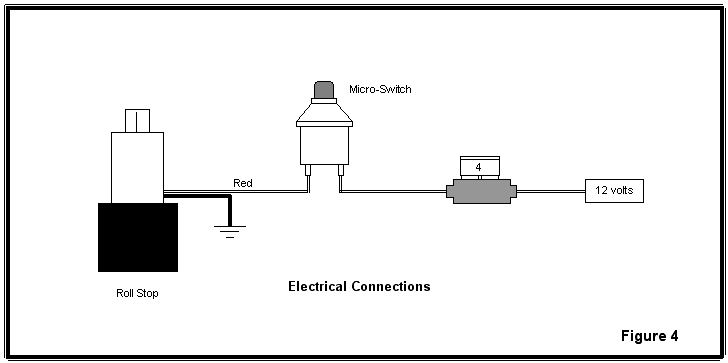This
information is from TCI's website. This is their recommendations
for correctly connecting a line-lock for your brake system. Note: If using an aftermarket brake system, a residual valve type master cylinder must be used. Proper installation is required. Do not drive vehicle until the brake system has been tested. Step 1 Select a mounting location that will position the solenoid between the brake master cylinder and the front wheel cylinders. (Can be installed for rear system if required. Just connect to rear brake system.) Step 2 Before mounting solenoid, note that the solenoid body has two (2) threaded port. The brake lines are connected to these ports. There are two (2) common size brake lines available. The solenoid will work with either size but you will need to purchase the proper bushing adapter. Most solenoids are 1/8" pipe thread. Purchase either an adapter that goes from 1/8” to 1/4” inverted flair or 1/8” to 3/16” inverted flair. When using the bushing adapters you may use Teflon tape on the adapter threads but do not cover the first two (2) threads. Use of an excessive amount of Teflon sealing tape can cause contamination to brake system. You must obtain a pair of brake line fittings to join the brake line to the solenoid. The brake line fittings will seal the system and keep from leaking fluid pressure. Step 3 Mount solenoid securely. See Figures 1-3 for connection details. Step 4 Next connect brake lines. The port that is marked 'master’ must be connected to the brake master cylinder and the port that is marked 'brake' must be connected to the front wheel cylinders. Use only DOT grade or better brake lines. Step 5 See Figure 4. Wiring the solenoid. The solenoid has two (2) wires: One (1) ground wire and one (1) hot wire that will be connected to micro-switch. Proper installation is required. Make sure that the black ground wire is connected to a good clean contact area. When connecting wires, use barrel connectors or other proper electrical connectors. If additional wire is required, use only the same gauge or larger. Step 8 A fuse holder should be connected between the solenoid and 12 volt positive (+) power source; before the micro-switch. See Figure 4. Step 7 Wiring and mounting micro-switch. DISCONNECT Battery. The switch must be mounted for easy operation. I suggest mounting close to the steering wheel or on the shifter. After you have selected where the switch will be mounted, measure length of wire needed to connect micro-switch to solenoid. Use at least a 22-gauge wire. You will need to run two (2) wires from the micro switch. One wire will be connected to solenoid (red wire), and the other wire (black) will be connected to the positive 12-volt system after the 4-amp fuse. Make sure that the terminals of the micro switch are connected to the wires properly. Secure all loose wires to avoid contact with any moving object. Allow enough wire to accommodate turning of the steering wheel if so mounted. Step 8 Bleed brake system. After all the brake lines are installed, the system must be air bled to release any air trapped into the system. Step 9 Refill master cylinder to proper level using approved DOT brake fluid. Stop 10 Test system: Reconnect battery. Jack vehicle up until the wheels are off the floor. Using proper weight jack stands secure the vehicle on the stands. Turn ignition on. Next, have someone turn the electrical system on, push on the brake pedal, press the micro-switch button down and hold on, then release the brake pedal. If wired properly, this will engage the front wheel cylinder and keep the front wheels from turning. Next, try to turn the front tires. With the micro-switch in the “on” position, you should not be able to turn the tires. Only when the micro-switch button is released, will you be able to turn the tires.
|



